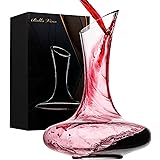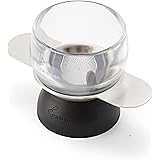The traditional investment landscape is changing. A recent study highlights this shift dramatically. Nearly half, 45% of investors, now actively seek alternative assets. This indicates a strong desire for new portfolio strategies. They want options beyond typical stocks and bonds. This search for stability and growth is reshaping investment approaches.
The video above introduces fractional investing. It explains how to access high-value assets. These assets were once exclusive to the wealthy. Now, they are available to everyday investors. This guide expands on those key insights. We explore this exciting financial frontier. We will delve into its benefits and practical steps.
Understanding Fractional Investing in Alternative Assets
Fractional investing breaks down barriers. It lets many investors own a piece of a valuable asset. Think of a Picasso painting. Or a rare bottle of wine. Even a vintage collectible car. These are called alternative assets. They differ from conventional stocks and bonds. They often exist outside public exchanges.
Historically, investing in fine art required vast sums. You might need $100,000 or more. Access also depended on elite auction invites. Fractional investing dramatically changed this. Now, you can start with as little as $500. This opens up a new world of opportunity. It makes high-value assets truly accessible.
Why Diversify Your Portfolio with Alternative Assets?
The stock market can be quite volatile. Its daily fluctuations often cause investor anxiety. Many seek ways to stabilize their financial futures. This pursuit leads them to alternative investments. These assets do not always move with the stock market. They can offer a powerful hedge.
Alternative assets provide unique benefits. They offer real diversification. Your portfolio gains resilience. They also hold potential against inflation. Traditional assets might lose value in inflationary times. Alternative assets can maintain or even increase worth. This makes them a strategic choice.
Potential Returns and Stability of Alternative Assets
Alternative assets show compelling return potential. Historically, fine art averages 6% to 11% annually. Rare wine offers steady growth over time. Collectibles can see jumps of 10% to 15% yearly. These figures are impressive. They highlight the financial appeal of these assets.
Blue-chip art, for example, is notable. This refers to works by established artists. Warhol or Basquiat are prime examples. Over two decades, it averaged an 8.9% annual return. Crucially, its performance often diverges from the stock market. This independence makes it a strong portfolio stabilizer. It acts as a potential inflation hedge.
How Fractional Investing Works
Making your first fractional investment is simple. Specialized online platforms facilitate the process. These platforms are well-established. They cover various alternative asset categories. They handle the complexities. This includes storage, insurance, and authentication.
Leading Platforms for Fractional Investments
Several reputable platforms exist. Each specializes in different asset classes. These platforms simplify access. They make investing straightforward for beginners.
- Masterworks: This platform focuses on fine art. It allows users to buy shares in renowned artworks. They manage all aspects of ownership. A secondary market is available for selling shares.
- Vinovest: For those interested in rare wine, Vinovest is a top choice. It offers expertly curated wine portfolios. Investors can own a share of fine wine.
- Rally: Rally specializes in collectibles. This includes classic cars and rare comics. They provide unique investment opportunities. These assets often appreciate over time.
The process is generally user-friendly. You sign up for an account. You fund it with your chosen amount. Then, you browse available assets. You can research artists or asset details. Finally, you purchase shares. The platform handles ongoing management. You track your investment’s performance easily.
Important Considerations and Risks
Fractional investing is not a shortcut to wealth. Like all investments, it carries risks. Understanding these risks is crucial. Informed decisions lead to better outcomes. Always proceed with caution and research.
Key Risks in Fractional Investing
Several factors need careful consideration. These risks are inherent in alternative assets. They differ from traditional market risks.
- Illiquidity: Alternative assets are not always easy to sell quickly. Finding a buyer might take time. This contrasts with instantly tradable stocks.
- Value Depreciation: Asset values can go down. There are no guarantees of returns. Market demand and trends influence value.
- Fees: Platforms charge various fees. These cover management and sales. Always understand the fee structure. These costs affect overall returns.
- Authentication: Trusting the platform is vital. They must ensure asset authenticity. Stick to reputable names. This protects your investment.
Risk and Reward: A Balanced Perspective
Consider a practical simulation. Investing $5,000 at a 10% annual return shows steady growth. After five years, your initial investment grows consistently. It does not create overnight riches. It demonstrates stable compounding. This growth pattern is predictable.
Now, imagine a higher-risk collectible. It might offer a 15% annual return. Your $5,000 could become over $9,000 in five years. This higher reward involves more volatility. The path to growth could be bumpier. This illustrates the classic risk-reward trade-off clearly.
Strategic Integration into Your Portfolio
Fractional investing should be part of a broader strategy. Experts recommend a balanced approach. Alternative assets are supplements. They should not replace your core investments. They add depth and diversification.
Consider dedicating a small portion of your portfolio. A range of 5% to 10% is often suggested. This allows for diversification benefits. It also manages potential risks effectively. It protects your overall financial health.
Do your homework before investing. Understand each asset class. Research the specific platforms. Only invest money you are comfortable losing. This smart, strategic approach ensures success. Fractional investing can be a powerful tool for growth. It helps build a well-rounded portfolio. It adds unique stability and potential.







